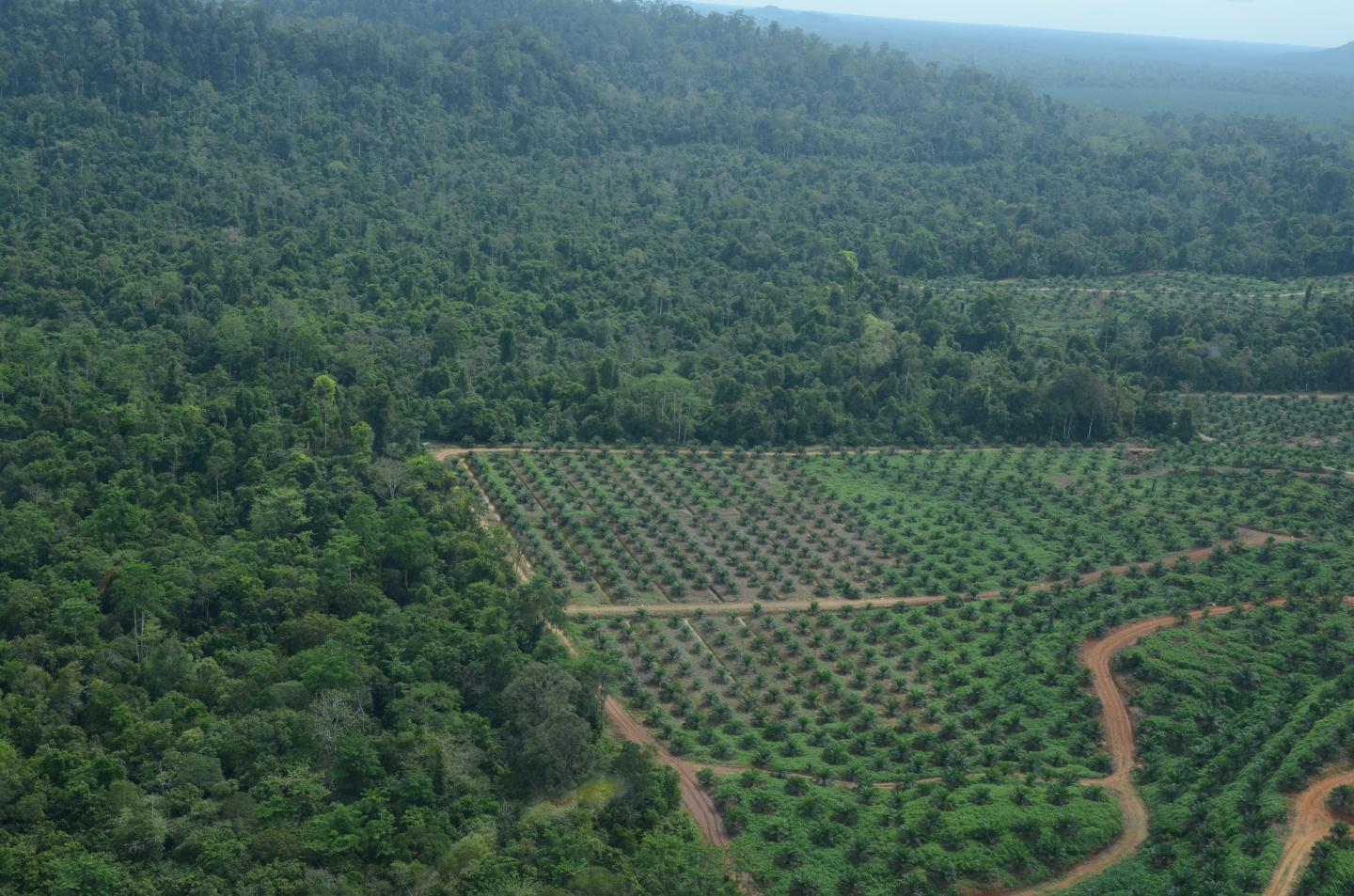
Credit: HUTAN-KOCP
Leipzig, Halle. Rapid population and economic growth are destroying biological diversity – especially in the tropics. This was reported by a research team led by the German Centre for Integrative Biodiversity Research (iDiv) and the Martin Luther University Halle-Wittenberg (MLU) in Nature Ecology & Evolution. A constantly growing demand for agricultural products requires ever new cultivated areas. Even though technological advances are making agriculture ever more efficient, the growing number of people makes up for these successes. The study shows: an effective nature conservation policy needs concepts against population growth and for sustainable consumption.
World population and the global economy are growing. People want consumer goods and food. As a result, more and more land is needed and nature is converted into fields and plantations: a threat to biodiversity and the ecosystem services that nature provides to humans. The usual response by policy makers to this sustainability challenge is to promote increases in agricultural and forestry efficiency through technological methods. But is this enough?
Scientists led by the iDiv research centre and the University of Halle have determined how land use affects biodiversity and ecosystem services and, for the first time, in what ways this impact has changed over time. They examined the role that population growth and economic development play in the loss of biodiversity and ecosystem services globally by combining data on biodiversity, land use and the sequestration of CO2 with economic models for the period between 2000 and 2011.
The results show that the growing world population and expanding global economy are resulting in more land use everywhere. This destroys biodiversity and ecosystem services. For example, between 2000 and 2011, the number of bird species endangered due to land use increased by up to seven percent. During the same period, the planet lost six percent of its potential to absorb CO2 from the air; this is because vegetation planted on newly created farmland cannot absorb as much carbon as that in natural habitats.
Loss of biodiversity occurs almost entirely in the tropical regions. In 2011, more than 95% percent of the bird species endangered due to agriculture and forestry were from Central and South America, Africa, Asia and the Pacific region. However, our ecosystems’ carbon sequestration capacity is dwindling all over the world – a quarter of its decline is due to agricultural and forestry land use in Europe and North America.
In the first eleven years of the millennium, cattle farming was the prime responsible for the decimation of biodiversity. At the same time, the cultivation of oilseeds increased massively in Asia and in South America. “This is, among other things, a consequence of the increased promotion of biofuels, which is meant to serve climate protection,” says the coordinator of the study, Prof. Henrique M. Pereira. Pereira is head of the Biodiversity Conservation research group at the iDiv research centre and the University of Halle.
In addition, the researchers wanted to find out to what extent global trade impacts on biodiversity and ecosystems. Almost every food purchase indirectly affects nature in other places around the world. A hamburger, for example, is made from meat from cattle raised on South American pastures, or cattle raised in local byres and fed on soy from South America. For this purpose, forests are cleared, the original biodiversity is destroyed. Thus, the developed countries, for example, are outsourcing 90 percent of the destruction caused by the consumption of agricultural products to other regions. In the period under investigation, consumption increased rapidly in other parts of the world as well. “Emerging economies are currently overtaking developed countries as the main drivers of biodiversity loss,” says Pereira.
The researchers found that environmental damage per dollar earned decreased throughout the world, meaning that land use has become more efficient. “Nevertheless, total environmental damage increased,” says lead author Dr Alexandra Marques from the iDiv research centre and the University of Halle. “Economic and population growth proceed so fast that they outpace the improvements”.
“The picture of who is causing biodiversity loss has therefore changed dramatically in a short time,” concludes Henrique Pereira. “It is not either the north or the south – it’s both.” From his point of view, this should also be taken into account in international nature conservation negotiations.
According to the scientists, a reduction in population growth is essential to reach the objectives of the UN Sustainable Development Agenda. This would, in the end, benefit both society and nature. At the same time, developed countries should take greater account of their remote responsibility for biodiversity destruction in other parts of the world and the impact of their climate policies on global land use. “We need an environmental policy which addresses climate change and biodiversity change in combination,” recommends Pereira.
###
Original Publication:
Marques, A., Martins, I.S., Kastner, T., Plutzar, C., Theurl, M.C., Eisenmeger, N., Huijbregts, M.A., Wood. R., Stadler, R., Bruckner, M., Canelas, J., Hilbers, J., Tukker, A., Erb, K., Pereira, H.M. (2019) Increasing Impacts of land use on biodiversity and carbon sequestration driven by population and economic growth. Nature Ecology and Evolution, doi:10.1038/s41559-019-0824-3 (link will be functional after embargo has lifted).
Contact:
Prof Henrique Miguel Pereira
Head of research group Biodiversity Conservation
German Centre for Integrative Biodiversity Research (iDiv) Halle-Jena-Leipzig
Martin Luther University Halle-Wittenberg (MLU)
Email: [email protected]
Web: https:/
Dr Alexandra Marques
German Center for Integrative Biodiversity Research (iDiv) Halle-Jena-Leipzig
Martin Luther University Halle-Wittenberg (MLU)
Leiden University, The Netherlands
Email: [email protected]
Dr Tabea Turrini
Media and Communications
German Centre for Integrative Biodiversity Research (iDiv) Halle-Jena-Leipzig
Phone: +49 341 9733106
Email: [email protected]
Web: https:/
Media Contact
Tabea Turrini
[email protected]
Related Journal Article
http://dx.




